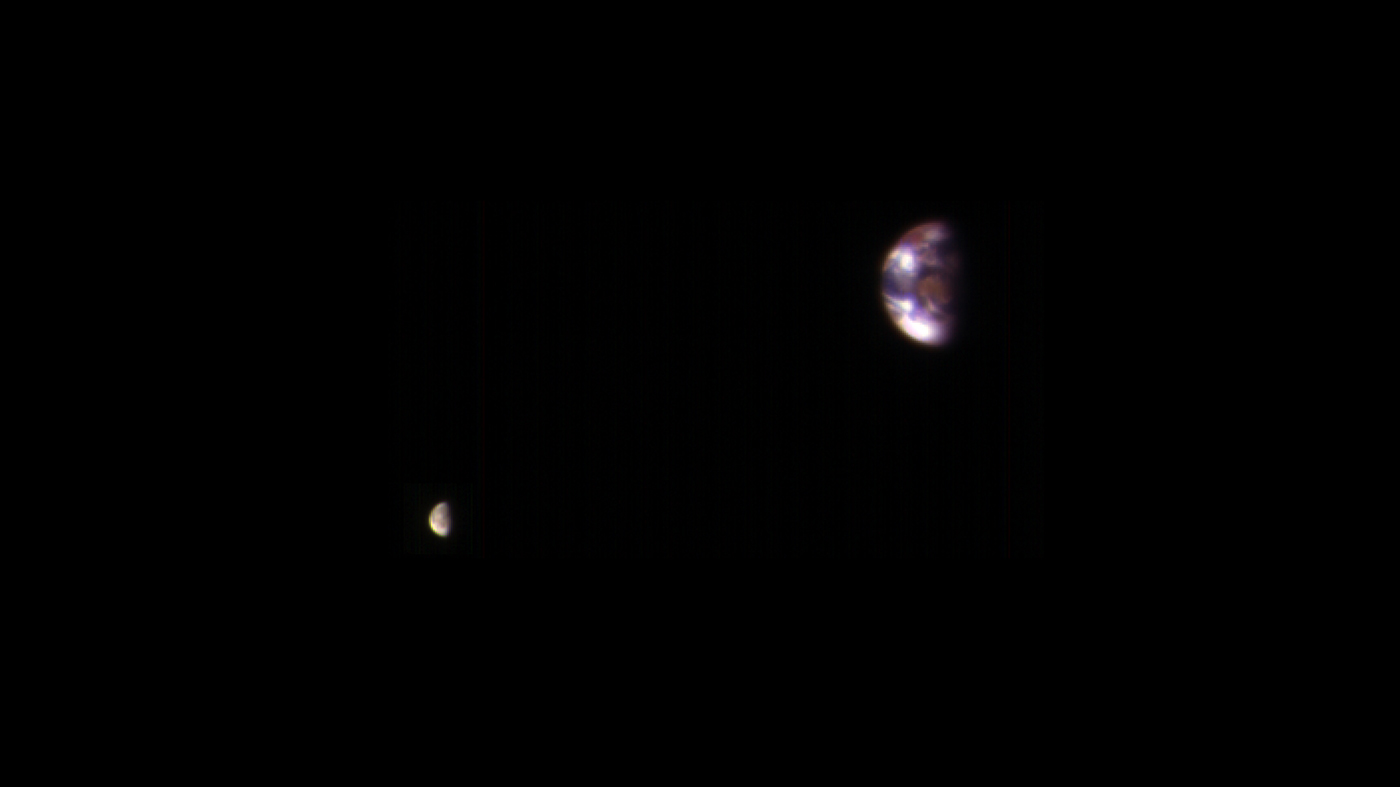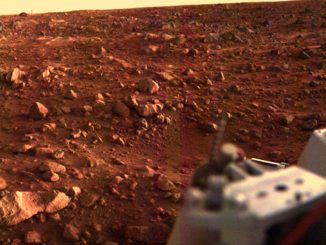
One of NASA’s satellites orbiting Mars has looked back home to record a Martians-eye view of the Earth and moon from 127 million miles (205 million kilometers) across the solar system.
The HiRISE camera aboard NASA’s Mars Reconnaissance Orbiter took a pair of images of Earth and the moon Nov. 20. Scientists working on the HiRISE instrument, developed and managed at the University of Arizona, used the imagery to calibrate the camera since the reflectance of the moon’s Earth-facing side is well known, NASA said.
Image analysts combined separate exposures of Earth and the moon for clarity and brightness, then combined the results into a single image. The moon appears darker than Earth, so a single exposure set to resolve Earth would result in a much dimmer moon.
At the time of the HiRISE image Nov. 20, the moon was positioned behind the Earth relative to Mars, giving the camera a view of the Earth-facing side of the lunar surface, according to NASA.
The reddish feature at the center of the Earth is Australia, with the bright white ice cover of Antarctica located at the bottom of the planet in the HiRISE image. East Asia is the reddish land area above Australia.
Email the author.
Follow Stephen Clark on Twitter: @StephenClark1.



